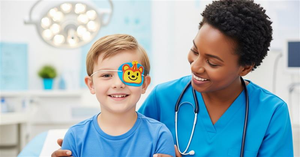Puberty’s Earliest Visible Sign
Breast development during adolescence is one of the first visible signs of puberty in girls, and it can bring both excitement and anxiety to teens and their families. Knowing what to expect, what is normal, and what might need medical attention helps parents offer reassurance and fosters healthy self-esteem in young women. Breast size changes can vary widely among individuals, and these differences are influenced by factors like genetics, hormonal patterns, nutritional status, and general health.
Hormonal Triggers of Breast Growth
Breast development, technically termed thelarche, usually begins between the ages eight to thirteen, though some girls may start earlier or later without it being a cause for concern. The process is initiated by the activation of the hypothalamic-pituitary-gonadal axis during puberty, which leads to increased secretion of gonadotropin-releasing hormone (GnRH).
This hormone stimulates the pituitary gland to release luteinizing hormone (LH) and follicle-stimulating hormone (FSH), which in turn act on the ovaries to produce estrogen. Rising estrogen levels are the primary hormonal driver of breast tissue growth. Estrogen stimulates the development of the ductal system within the breast, while progesterone, which increases later in puberty, helps in the formation of glandular tissue.
Tracking Development with Tanner Stages
Physicians often assess breast development using the Tanner staging system, which classifies breast growth into five stages. Stage I is a prepubertal phase where the breasts are flat, with no glandular tissue present. Stage II is the onset of breast budding, where a small mound forms, and the areola begins to enlarge. Stage III involves further enlargement of the breast and areola without clear separation of their contours. In Stage IV, the areola and nipple form a secondary mound above the level of the breast. Finally, Stage V represents a mature adult breast, with the areola receding into the general contour of the breast and only the nipple projecting outward. While these stages provide a framework for clinicians, individual timing and progression vary greatly, and deviation from exact ages is usually within normal limits.
Genetics: The Strongest Predictor of Breast Size
Breast size during and after puberty is largely determined by genetic factors. Studies indicate a strong hereditary influence on breast volume, shape, and symmetry. Maternal breast development patterns can provide a general guide, but it is essential to remember that every adolescent’s body develops at its own pace. Differences in breast size between the two breasts are common during growth, and mild asymmetry is considered normal. Parents should reassure their children that slight differences rarely indicate any medical problem.
Body Weight and Nutrition’s Impact on Breast Size
Aside from genetics and hormones, body weight plays a significant role in breast size. Breasts are composed of glandular tissue and adipose (fat) tissue. An increase in overall body fat percentage can lead to an increase in breast size, while significant weight loss can reduce breast volume. However, breast tissue distribution varies widely, and two individuals with similar body compositions may have very different breast sizes.
Nutrition also influences breast development. Severe malnutrition, eating disorders like anorexia nervosa, or chronic illnesses that impair growth can delay or disrupt normal breast development. Conversely, a balanced diet with adequate protein, healthy fats, vitamins, and minerals supports healthy pubertal changes, including breast growth. Emerging research also suggests that excessive consumption of processed foods and sugary beverages, which can contribute to obesity, may accelerate the onset of puberty, a phenomenon known as precocious puberty.
Physical Activity and Breast Development
Physical activity has not been shown to directly affect breast size but it can influence overall body fat and hormonal balance. Some highly active teens with very low body fat, such as elite gymnasts or dancers, may experience delayed puberty or minimal breast development, a condition called functional hypothalamic amenorrhea. This is usually reversible with appropriate nutritional rehabilitation and reduction of excessive exercise.
When to Suspect an Underlying Hormonal Problem
Hormonal disorders can also impact breast growth. Conditions like Turner syndrome or androgen excess disorders (such as polycystic ovary syndrome, PCOS) may lead to absent or abnormal breast development. Parents should seek medical evaluation if a girl shows no signs of breast development by age 13 or experiences sudden, painful swelling unrelated to normal growth or menstruation.
Understanding Breast Pain in Teens
Pain or tenderness in the breasts during adolescence is common and usually due to the natural growth process or hormonal fluctuations of the menstrual cycle. This discomfort, termed mastalgia, is typically cyclical and does not require treatment beyond reassurance or simple measures like wearing a well-fitted, supportive bra. However, persistent or severe pain, redness, warmth, or discharge from the nipple warrants prompt medical evaluation.
Breast Lumps During Adolescence
Breast lumps during teenage years are usually benign. The most common cause is a fibroadenoma, a noncancerous, smooth, firm mass that moves easily under the skin. While breast cancer is extremely rare in adolescents, any persistent lump should be assessed by a healthcare provider for proper diagnosis and peace of mind.
Supporting Positive Body Image
Parents play a vital role in supporting their children through these changes. Open, nonjudgmental communication about puberty, breast development, and body image helps teens feel secure and informed. It is important to avoid teasing or negative comments about breast size, as these can leave lasting emotional scars and contribute to poor self-esteem. Encouraging healthy lifestyle habits, like balanced eating and regular physical activity, is beneficial for overall health and development.
Bra Fitting: Comfort During Rapid Growth
A properly fitted bra can provide comfort and support during breast growth, especially when breasts begin to feel heavy or tender. Wearing bras made of breathable fabrics can reduce skin irritation and rashes. Parents can help their daughters with bra fitting or seek professional assistance in stores that offer fitting services. It is recommended to remeasure every six months during puberty as breast size can change rapidly during these years.
Avoiding Unproven Remedies and Unsafe Practices
Parents should avoid encouraging or allowing teens to use herbal products, creams, or supplements advertised as breast enhancers, as there is no scientific evidence supporting their safety or efficacy. Many of these products are unregulated and may contain harmful substances. Likewise, surgical procedures for cosmetic breast enhancement or reduction are generally discouraged until breast development is complete, which typically occurs by age 18.
Emotional Challenges of Breast Development
Psychologically, breast development can be a source of stress or embarrassment for some teens, especially if they develop earlier or later than their peers. This can lead to social withdrawal, anxiety, or depression. Parents should watch for signs of emotional distress and seek counseling support if needed. Reinforcing that everyone’s body grows at its own pace helps normalize variations in development and reduces feelings of isolation.
Teaching Breast Self-Awareness
Educational conversations about breast health should include teaching teens how to perform gentle breast self-awareness checks once breast development stabilizes. While routine breast self-exams are not recommended for cancer screening in teens, knowing what is normal for their own breasts can help them recognize any significant future changes.
Breast Changes Beyond Adolescence
In addition to puberty, breast size can continue to change into the early twenties as hormonal cycles become more regular. Pregnancy, weight changes, and use of hormonal contraceptives can also influence breast size and shape later in life. Understanding these factors prepares young women for the changes they may experience as adults.
Conclusion: Fostering Knowledge and Confidence
In conclusion, breast size changes during adolescence and early adulthood are a normal part of female development driven primarily by genetic and hormonal factors. Wide variations in timing, size, and symmetry are common and rarely indicate a medical problem. Parents should foster open communication, provide reassurance, and support healthy habits that contribute to positive body image. Medical evaluation is advised if there is no breast development by age 13, sudden or severe pain, or persistent lumps. With compassionate guidance and accurate knowledge, parents can help their children navigate puberty confidently and healthily.








Be the first one to comment on this story.